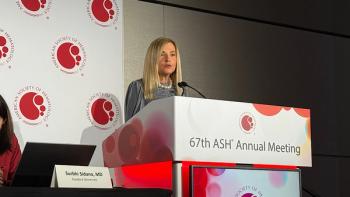
Tumor Treating Fields Extend LA-PAC Survival by 2 Months: Vincent Picozzi, MD
Vincent Picozzi, MD, medical oncologist and director of the Pancreaticobiliary Program at Virginia Mason, discusses findings from the PANOVA-3 trial, which represents a significant breakthrough in locally advanced pancreatic cancer (LA-PAC) treatment.
The randomized phase 3 trial PANOVA-3 (
The data were presented at the
This transcript was lightly edited; captions were auto-generated.
Transcript
What were the key findings from the PANOVA-3 trial, and what makes them clinically significant for patients with LA-PAC?
The PANOVA-3 trial was a randomized, phase 3 trial, which looked at the use of so-called tumor-treating fields, electrical fields passed through the patient's body, directed to the cancer with the use of gemcitabine and nab-paclitaxel. The trial was a 1:1 randomization between chemotherapy with or without the tumor-treating fields. The exciting results are that it was a positive trial in that the use of the tumor-treating fields added about 2 months to overall survivorship with the use of gemcitabine and nab-paclitaxel alone. This is actually the first positive trial ever in locally advanced pancreatic cancer, and with that, there was an improvement seen in quality of life, particularly with respect to the prevention of pain progression. Also, the device proved to be practical and safe to use, so all those things together really make the use of the device now a new standard for treatment in local advanced pancreatic cancer.
How does the observed improvement in overall survival compare with other available treatment options for LA-PAC, and what subgroups, if any, showed the most pronounced benefit?
The subgroup analysis hasn't really been performed yet in detail, but the improvement in overall survival of the aggregate group [was] about 2 months. If one looks at not the intention to treat group, but the modified intended to treat group, it was somewhat longer than that, about 3 months. This improvement in survival is typical of other successful trials in pancreatic cancer, such as the trial that was done with NALIRIFOX versus gemcitabine and Abraxane, the so-called NAPOLI 3 trial [
Were there any notable safety or tolerability signals to be aware of?
Well, the major side effect directly related to the use of devices [was] skin toxicity, which occurred in a meaningful way, between 5% and 10% of people, but this proved to be a manageable toxicity, and the significant majority of people were able to continue use of the device.
Newsletter
Stay ahead of policy, cost, and value—subscribe to AJMC for expert insights at the intersection of clinical care and health economics.









































